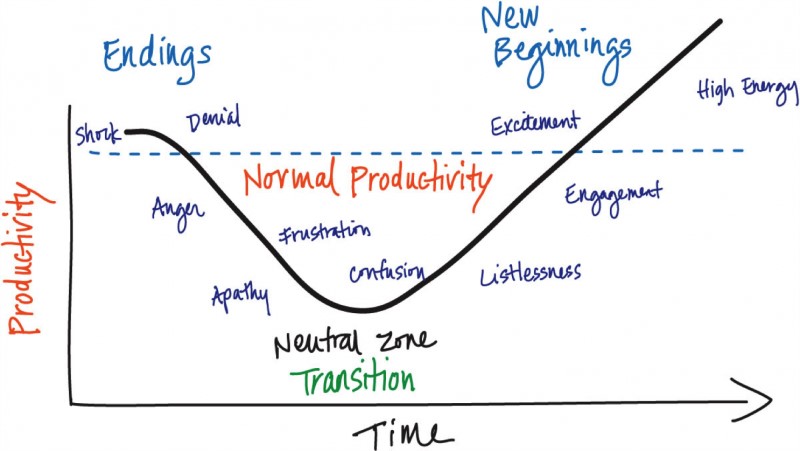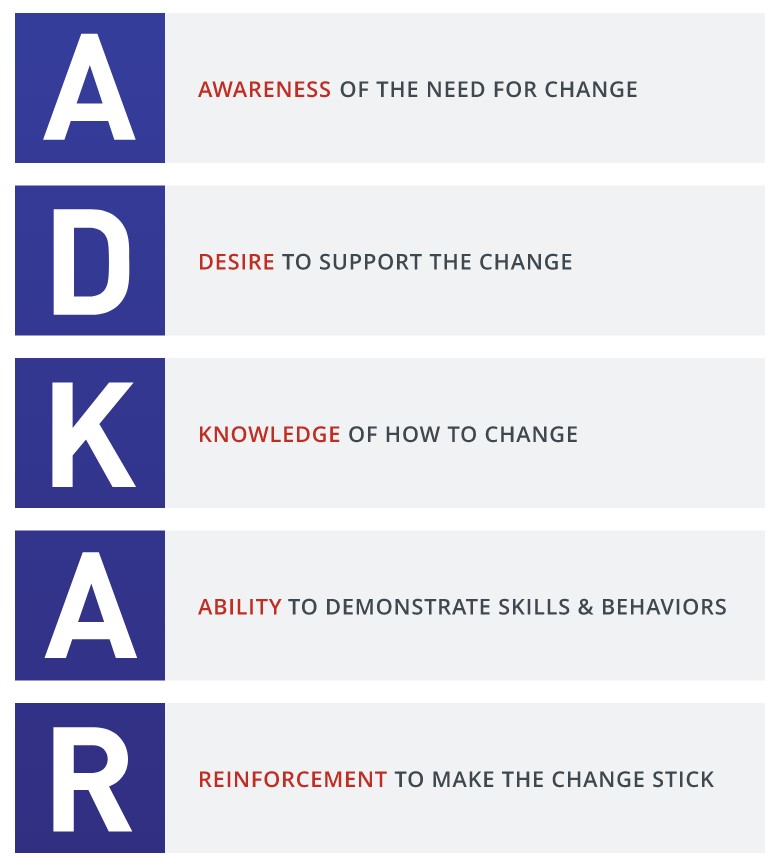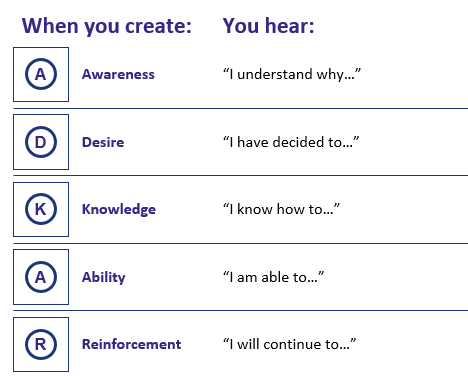Leading through change
How we lead through change will reinforce or detract from our testimony as followers of Jesus Christ.
How are you leading through change? Christ-centered Change Management strategies
As COVID-19 ushers in a time of unprecedented change, leaders are stretched to adapt and innovate more than ever before. Based on his work with 2,500+ member companies, Mike Sharrow, CEO of C12 estimates that 25% of businesses are seeing a dramatic increase in demand for their products and services during this season. Another 50% are navigating an unknown level of impact on their businesses, and 25% are facing serious challenges caused by this pandemic.
In this season, leaders are forced to navigate uncertain scenarios, make hard decisions, while attempting to care well for employees who are experiencing increased stress. Doing this well is impossible apart from the Lord. “As servant leaders, we must first look in the mirror and ask how we can lead change in such a way that our teams flourish, our enterprises prosper, and the missions we steward are advanced to the glory of God.” (C12, November 2019 curriculum on change)
Jeremiah 17: 7-8 says, “Blessed is the man who trusts in the Lord, whose trust is the Lord. He is like a tree planted by water that sends out its roots by the stream, and does not fear when heat comes, for its leaves remain green, and is not anxious in the year of drought, for it does not cease to bear fruit.”
What does it look like to bear fruit in your family and in your leadership in this season? What will remain in family members’ and staff members’ minds on how you lead through this time of uncertainty? This article seeks to equip leaders with high level biblical and change management principles.
A firm foundation for change.
James writes, “Consider it pure joy, my brothers and sisters, whenever you face trials of many kinds, because you know that the testing of your faith produces perseverance. Let perseverance finish its work so that you may be mature and complete, not lacking anything.” James 1:3-4
This statement is easy to read past or affirm in good times, and seemingly impossible in seasons like we’re now experiencing. But the Lord doesn’t leave us alone to discern how to navigate these trials. His desire is for us to come to him and for him to guide us through these seasons. In the following verse in James, he gives us this invitation: “If any of you lacks wisdom, you should ask God, who gives generously to all without finding fault, and it will be given to you.” James 1:5
Our awareness of our own limitations along with our recognition of who God is, will drive us toward him in this time of uncertainty.
As leaders, we must root ourselves in Him and his word as our firm foundation for leading change. Our connection to the Lord through prayer, scripture, and other spiritual disciplines is our weapon in the battle against the enemies’ desire to discourage, destroy, and disunify (I Peter 5:8).
Managing the people side of change.
How are you experiencing change in this season? How might your employees, other stakeholders, and their families be experiencing it?
People experience change as loss. Regardless of the change or where you sit, there is typically some degree of loss that is felt. Whether its loss of expertise when your company switches to an unfamiliar technology system, loss of colleagues in a reorganization, loss of normal workflows when most jobs are transitioning to be done remotely or organizational goals are shifting dramatically. Losses can also include a loss of identity or sense of stability tied to work.
People naturally seek to mitigate loss in their lives through various strategies, including denial and resistance. Loss, even in a professional context, triggers grief that result in a temporary reduction in productivity or engagement at work. The following image demonstrates the normal productivity dip that can be triggered by change. [A recent Harvard Business Review article attributes the collective discomfort around COVID-19 to grief and discusses strategies to move through it.]

Image: Managing Transitions by William Bridges
Leading through the opportunity of change
Change creates vulnerability because of perceived and real losses. This opportunity creates an opening to deepen communications and relationships, but it can also have the opposite effect if done poorly resulting in disunity or isolation.
Doing change well, with sincerity and appropriate levels of transparency, is a way of demonstrating love and care for those the Lord has entrusted to your stewardship. This doesn’t mean leading change will be easy.
How you lead and communicate through change can reflect what you believe to be true. In this season of change, what will your organization observe in your life? Humility, integrity, generosity? Or self-reliance, fear, and scarcity?
“Every change event and season of disruption represents a tremendous opportunity for ministry in business. What did Jesus do when He saw people confused, distressed, oppressed, or paralyzed? He heard them, taught them, touched them, healed them, and loved them. What if, instead of ignoring others’ emotional resistance to change, we anticipated their emotions and viewed them as strategic opportunities for intentional ministry?” (C12, November 2019 curriculum on change)
Change management: A process for guiding the people side of change.
Prosci’s ADKAR change management framework, offers a practical tool to help individuals understand and navigate the change process. ADKAR (Awareness, Desire, Knowledge, Ability, and Reinforcement) is a simple, sequential process that people move through in successful change efforts.
First, the individual must have awareness of the need for change. Communication that a change is happening is insufficient to create awareness. Individual must be clear on the “why.” From Prosci’s research, lack of awareness is the leading cause of employee resistance.
Second, and most difficult, is desire to support the change. This requires the individual to make a personal commitment to support the change.
Next, individual need to have the knowledge of how to change. Do they understand what it will look like for them to be successfully engaged in the change? What will be expected of them?
Beyond knowing how to change, ability requires individuals to demonstrate the desired skills and behavior. They must know what to do and be able to do it to achieve the desired the ROI on change efforts.
Without proper reinforcement to make the change stick, individuals may revert back to prior behaviors. Senior leaders can play a key role in helping to encourage consistency in the new ways of operating.
Because the model is sequential, individuals will not have the desired to support the change without adequate awareness. Without desire, they will not be able to progress to knowledge or ability.
Applying ADKAR to a change you’re currently facing.
Consider a change you are currently facing. Using the graphic on the right as a guide for what achievement in each area looks like, how would you rank how well the individuals being asked to change are doing in each area? Mentally score each area on a scale of 1-5.
Which of your ADKAR phases scored a 3 or less? If you reflected on a newer change, awareness will inevitably be low. As you consider more advanced projects you may already have higher scores in knowledge and ability. If you’re thinking of an initiative that is experiencing resistance, you may have discerned that awareness and/or desire were lower scoring.
Your change barrier point. The first, lower scoring (3 or below) area of the ADKAR model represents your barrier point and informs where leaders should focus their energy to ensure that the change progresses.
When individuals do not successfully move through the phases of change and remain stuck in awareness or desire, you’ll find people asking the same questions over again, lower productivity, lower utilization, worry, all of which contribute to having a weak organizational change culture.
Five “levers” of change.
Change management plans must consider the following five “levers” to ensure that the people side of change will be done efficiently and effectively:
- Communication
- Sponsorship of the change initiative
- Coaching
- Training
- Resistance management
Communication is key. The average person must hear a message 5-7 times before they internalize it.
From Prosci’s research, the two preferred senders of change messages are Executive leadership (typically the initiative sponsor) and employees’ direct managers (middle managers). It is important to note that the research also shows that middle managers are typically the category of employees who show the highest resistance to change. In effectively engaging managers, it is key to remember that middle managers are employees first. If they are not bought into the change, they will not effectively lead their teams through the change.
According to the research, the leading success factor for change management is an active and visible sponsorship of the initiative. The sponsor needs to have an appropriate level of organizational authority to drive the change and be supported to do the role well. Engaging the executive sponsor and coaching them through talking points or other means is an effective way to collaborate and equip them to succeed in their critical role. Sponsor engagement contributes significantly to helping staff have awareness and desire.
Each of the five levers helps move staff through the various ADKAR stages, but it’s also important to use the right tools for each phase. You cannot train desire or communicate ability. Coaching at each stage is recommended, even if it’s less formal or through a direct manager. Training is also critical in moving people through knowledge and ability.
Resistance is natural
Resistance is a natural reaction to change and is actually an indicator that individuals are moving through the change process. The first recommended step in managing resistance is listening well. Not only is this a best practice to better empathize with others, it’s a practical way of showing love. Planning to have capacity to listen well before, during, and after the change process will help staff feel more bought in and engaged.
While we will not mitigate resistance completely, these tools will help you plan for it.
Change = opportunity
Change, even change related to crisis, creates an opportunity.
As leaders who follow Jesus Christ, how might we best use this change as an opportunity to live out and even share about our faith with those around us? How can we support others and listen well, even when it can’t be in person? What does our prayer life look like publicly and privately (Philippians 4:6-7)?
May God guide you as you abide (John 15) in Him. May he grant you abundant wisdom (James 1:5) in change as you lead. May you feel his nearness and peace as you lead.
To learn more about change, contact us. Organizations like Prosci offer training on change management, while books like Switch by Dan and Chip Heath or works from John Kotter complement a more formal change process with specific strategies.

The ADKAR change management framework was created by Prosci (Professional Sciences), which is a global change management research and training firm and a Qualified Education Provider™ (QEP™) by the Association of Change Management Professionals. While there many change models and frameworks that exist, this one is both simple and supported by research. Works from John Kotter, Dan and Chip Heath and others are a practical complement this framework well, offering specific strategies that can be employed at different phases of ADKAR. All research referenced in this article is attributable to Prosci unless other wise noted.

View the following 3-minute case study on communicating and listening through change.
View the following 3-minute case study describing how one company used their chaplaincy services to provide valuable listening support during change.
Scriptures for times of change:
Scripture to remind us of His truths to anchor our mindset and messaging through change management:
Our God is Sovereign over all
- “The earth is the Lord’s and the fullness thereof, the world and those who dwell therein.” (Psalm 24:1, ESV)
- “For by him all things were created, in heaven and on earth, visible and invisible, whether thrones or dominions or rulers or authorities—all things were created through him and for him. And he is before all things, and in him all things hold together.” (Colossians 1:16-17, ESV)
- “I know that you can do all things and that no purpose of yours can be thwarted.” (Job 42:2, ESV)
The world will change, but our God remains the same
- “Of old you laid the foundation of the earth, and the heavens are the work of your hands. They will perish, but you will remain; they will all wear out like a garment. You will change them like a robe, and they will pass away, but you are the same, and your years have no end.” (Psalm 102:25-27)
- “Jesus Christ is the same yesterday and today and forever.” (Hebrews 13:8)
His ways are not our ways
- “For my thoughts are not your thoughts, neither are your ways my ways, declares the Lord. For as the heavens are higher than the earth, so are my ways higher than your ways and my thoughts than your thoughts.” (Isaiah 55:8-9, ESV)
Our identity is firmly rooted in Him
- “But you are a chosen race, a royal priesthood, a holy nation, a people for his own possession, that you may proclaim the excellencies of him who called you out of darkness into his marvelous light.” – I Peter 2:9, ESV
- “For in him the whole fullness of deity dwells bodily, and you have been filled in him, who is the head of all rule and authority.” – Colossians 2:9-10, ESV
As followers of Jesus Christ, we have hope.
- “…that you may not grieve as others do who have no hope. … we believe that Jesus died and rose again.” I Thessalonians 4:13-14 (ESV)
- “And do not fear those who kill the body but cannot kill the soul. Rather fear him who can destroy both soul and body in hell. Are not two sparrows sold for a penny? And not one of them will fall to the ground apart from your Father. But even the hairs of your head are all numbered. Fear not, therefore; you are of more value than many sparrows.” (Matthew 10:28-30, ESV
- “He will be the sure foundation for your times, a rich store of salvation and wisdom and knowledge; the fear of the Lord is the key to this treasure.” Isaiah 33:6

